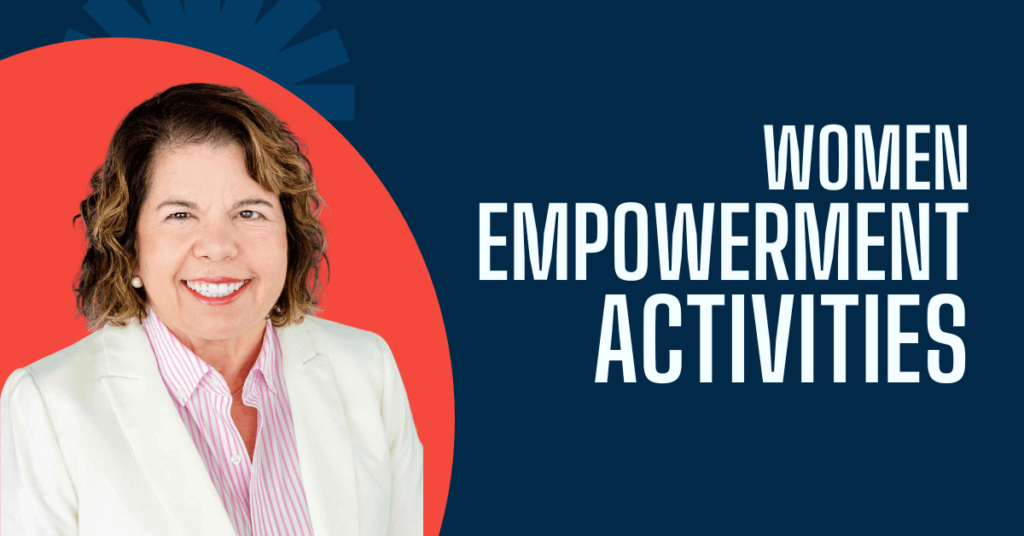Table of Contents
Understanding Women’s Empowerment
Women empowerment activities are crucial for creating a fair and equal society. These efforts aim to boost women’s confidence, skills, and opportunities. From education to healthcare, many areas need attention. Volunteers for women’s empowerment play a key role in driving change.
They support programs that improve women’s health and well-being. By joining these activities, we can help women reach their full potential. This article explores various ways to empower women and create lasting impact.
Definition and Importance
Women empowerment means giving women the tools to shape their lives. It’s about equal rights, chances, and respect. Women empowerment workshops teach key skills and boost confidence. These events help women find their voice and strength.
They learn to make choices and take control. Empowering women benefits everyone. It leads to stronger families, communities, and economies. When women thrive, society grows. That’s why women’s empowerment activities are so vital today.
Historical Context
Women’s fight for equality has a long history. In the past, women had few rights. They couldn’t vote, own property, or work many jobs. The 1800s saw the start of organized women’s movements. Suffragettes fought hard for voting rights. The 1960s brought a new wave of activism. Women demanded equal pay and more opportunities.
Over time, laws changed to support women’s rights. Still, progress was slow in many parts of the world. Today, women’s empowerment activities build on this rich history. They address both old and new challenges. These efforts honor the struggles of the past while pushing for a better future.
Current Global Challenges
Women still face many hurdles worldwide. Pay gaps and job discrimination remain common. In some places, girls can’t go to school. Violence against women is a serious problem. Many lack access to healthcare. The women’s empowerment toolbox helps tackle these issues. It includes education, legal support, and economic programs. Women’s empowerment event ideas address these challenges.
Workshops teach job skills. Seminars raise awareness about rights. Health fairs provide vital information. Yet progress is uneven across the globe. Culture and laws can slow change. Poverty makes empowerment harder. Climate change often hits women hardest. Solving these problems needs ongoing effort and new approaches.
Key Women Empowerment Activities
Activities for women’s empowerment come in many forms. They aim to boost skills, rights, and opportunities. Women empowerment activities span various areas. These include education, work, health, and leadership. Women’s empowerment activity ideas often focus on practical skills. Workshops teach financial planning.

Training programs boost job readiness. Support groups offer safe spaces to share and grow. Other activities raise awareness about women’s rights. Campaigns fight against gender violence. Community events celebrate women’s achievements. Many activities involve men as partners for change. Sports programs build confidence and teamwork. Art projects give women a creative voice. Each activity plays a part in the bigger goal of equality.
Education and Skill Development
Education is key to women’s empowerment. It opens doors to better jobs and lives. Skill development helps women compete in the job market. Many programs focus on teaching practical skills. These include reading, writing, and math. Computer classes help women join the digital world. Vocational training prepares women for specific careers. Language courses can boost job prospects.
Some programs teach soft skills like public speaking. Others focus on leadership and decision-making. Adult education helps women who missed school earlier. Online courses make learning flexible for busy women. Mentoring programs pair experienced women with learners. These educational efforts help women grow and succeed.
Economic Empowerment Initiatives
Economic power is crucial for women’s independence. Many initiatives focus on boosting women’s financial strength. Microloans help women start small businesses. Savings groups teach money management skills. Job training programs prepare women for better careers. Some initiatives focus on women in farming. They teach new techniques and provide tools. Others help women enter male-dominated fields like tech. Equal pay campaigns fight workplace discrimination.
Entrepreneurship workshops spark business ideas. Programs also teach budgeting and investment skills. Some initiatives partner with companies to hire more women. Others help women patent their inventions. These efforts aim to close the gender gap in wealth and work.
Political Participation and Leadership
Women’s voices in politics drive real change. Leadership programs teach women to run for office. Voter education helps women make informed choices. Some groups work to change unfair election laws. Mentorship connects experienced leaders with newcomers. Campaign training teaches how to win elections. Public speaking workshops boost confidence.
Programs also focus on women’s rights in law-making. Some teach how to lobby for important causes. Others help women join local government boards. Leadership camps inspire young girls to aim high. Women’s political networks offer support and resources. These efforts aim to balance political power between genders. When more women lead, policies often become more inclusive.
Health and Wellness Programs
Health is key to women’s empowerment activities. Many programs focus on women’s unique health needs. Free clinics offer check-ups and advice. Nutrition classes teach healthy eating on a budget. Fitness groups make exercise fun and social. Mental health workshops address stress and anxiety. Some programs teach about reproductive health. Others focus on preventing common women’s diseases.

Health fairs bring services to local communities. Support groups help women facing health challenges. Programs also teach self-defense for safety. Yoga and meditation classes promote overall wellness. Health education empowers women to make informed choices. Mobile health units reach women in remote areas. These activities aim to improve women’s physical and mental well-being.
Reproductive Rights and Family Planning
Access to family planning empowers women. Education on reproductive rights is crucial. Programs teach about different birth control methods. They also explain how to use them safely. Some initiatives offer free or low-cost contraceptives. Others focus on prenatal care for healthy pregnancies. Workshops discuss the importance of consent.
They also cover sexually transmitted infections. Some programs help women track their menstrual cycles. Others teach about menopause and its effects. Family planning allows women to choose when to have children. This can impact education and career choices. Some initiatives fight for legal access to safe abortions. Others work to reduce teen pregnancy rates. These efforts aim to give women control over their bodies and futures.
Implementing Women Empowerment Activities
Putting women empowerment activities into action takes planning. It starts with understanding local needs. Successful programs often involve the community. They set clear goals and measure progress. Partnerships with local leaders can boost impact. Funding is key to sustaining these activities. Some rely on volunteers, others on paid staff. Many use a mix of both.
Training implementers ensure quality programs. Adapting activities to fit cultural contexts is crucial. Technology can help reach more women. Social media spreads awareness of available programs. Regular feedback helps improve activities over time. Celebrating successes motivates continued participation. Addressing challenges quickly keeps programs on track. Effective implementation turns ideas into real change for women.
Government Policies and Legislation
Laws play a big role in women’s empowerment. Many countries now have gender equality laws. These ban discrimination in work and education. Some laws ensure women’s right to vote and hold office. Others protect women from violence and harassment. Policies often focus on equal pay for equal work. Some countries require companies to have women on their boards.
Family leave policies help women balance work and home. Laws can also ensure girls’ right to education. Some policies offer incentives for women-owned businesses. Others focus on women’s healthcare access. Enforcing these laws is as important as passing them. Advocacy groups work to improve and update policies. These legal efforts create a framework for women’s advancement.
Corporate Initiatives and Workplace Equality
Companies play a key role in empowering women at work. Many now have diversity hiring goals. This helps more women enter different fields. Flexible work policies support work-life balance. Equal pay audits check for unfair wage gaps. Some firms offer leadership training for women. Mentorship programs pair junior and senior women. Anti-harassment policies make workplaces safer. Parental leave benefits help working mothers. Some companies sponsor women’s networking events. Others create women-focused employee resource groups. Childcare support helps women stay in the workforce. Transparency in promotion criteria ensures fairness. Return-to-work programs help after career breaks. These efforts aim to level the playing field for women in business.
Mentorship Programs
Mentorship programs boost women’s careers and confidence. They pair experienced leaders with aspiring women. Mentors share knowledge, advice, and connections. These relationships help women navigate workplace challenges. Some programs focus on specific industries. Others target women at different career stages.
Leadership coaches like Lisbeth Ceballos offer valuable guidance. Ceballos helps women unlock their full potential. She teaches how to live a life full of your abilities. Mentorship can be formal or informal. It often includes regular meetings and goal-setting. Some programs use group mentoring for wider impact. Others offer virtual mentoring to reach more women. These efforts help create a pipeline of women leaders. They also build supportive networks for ongoing growth.

